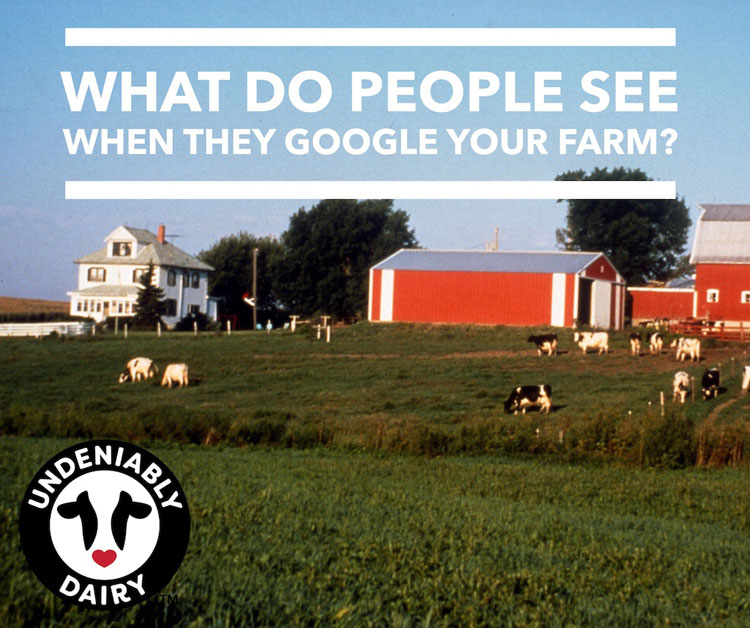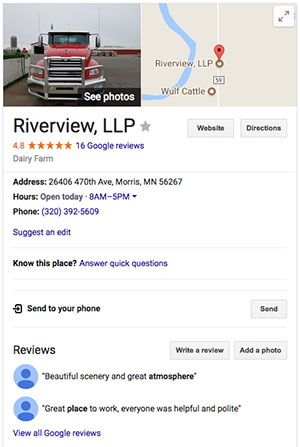Imagine you are driving down a country road and you see a farm off in the distance. It looks to be well cared for but as you approach the farm’s drive, there’s something wrong.
Instead of having a beautiful farm sign, mowed grass, and a newly painted fence, you see a broken-down gate littered with several newspaper clippings on it. Some of the articles are good and talk about the farm’s dedication to the community but they are old and yellow.

This farm is fictional but many times when I’m reviewing a farm’s online presence I see this kind of neglect — online.
Fortunately, or unfortunately, depending on your mindset, you now have two farms. The physical one and the digital one.
The physical farm is a bit easier for you to control. You know how many people are visiting on a yearly basis. You have them take tours, see how you care for the animals, and maybe they can enjoy some ice cream or chocolate milk afterward.
But your digital farm? Do you know how many people are finding your farm online and what they are seeing?
Did you know that Google processes more than 4 billion searches per day? With that many requests, you should wonder how many people have Googled dairy farms in your area and have found your farm.

If it doesn’t, you’ll be happy to know that you can change those results. But probably not in the way you are thinking.
You can’t physically get inside of Google’s algorithm and point their results to specific pages you want.
But you can upload content onto the internet and help Google find it, index it, and display it exactly the way you want people to see it.
How do you do this?
You need a website. It doesn’t have to be expensive or elaborate. In fact, you can do a free website using Wordpress.com, Weebly, Wix, or Square Space.
You need to name the website after your farm so it’s in the URL (Universal Resource Locator) and written on the page like this: yourfarmname,com. Or like this if you are using a free website: yourfarmname,wordpress.com.
Once you have the website up and running, you’ll want to add great photos and video of the farm. Google will then index these photos and video to the website and soon this content will start showing up in search results for your farm.
But what if you’ve already done a lot of this on your farm’s Facebook page?
The problem is that Google (which owns almost 80 percent of the search engine market) doesn’t index (find and store) most of Facebook’s information like it does a website on the internet. And with a website, you’ll have complete control over your farm’s information, such as photos and video.
On Facebook, you are putting information into its website and it can control who sees your photos and videos. Don’t get me wrong — Facebook is important to reach audiences because that’s where they spend time — but if they are searching for your farm, you will want them to find the website first.
Once you have a website, Google will start putting together a business graph that will have your address, website, hours of operation, reviews, and so forth . . . all pulled together in one spot so people can see what an excellent farm you run.
If you decide to not create your own website, Google will still pull information about your farm, but you won’t be in control of what those other sources of information (news sites, blogs, and social media) say about your farm.
If you need help putting together a farm website, local checkoff staffs can provide help. I am available as well at don.schindler@dairy.org.
Don’t neglect the gate to your digital farm. It may be the only farm most of your urban consumers ever see, and it should present the image you want it to.
